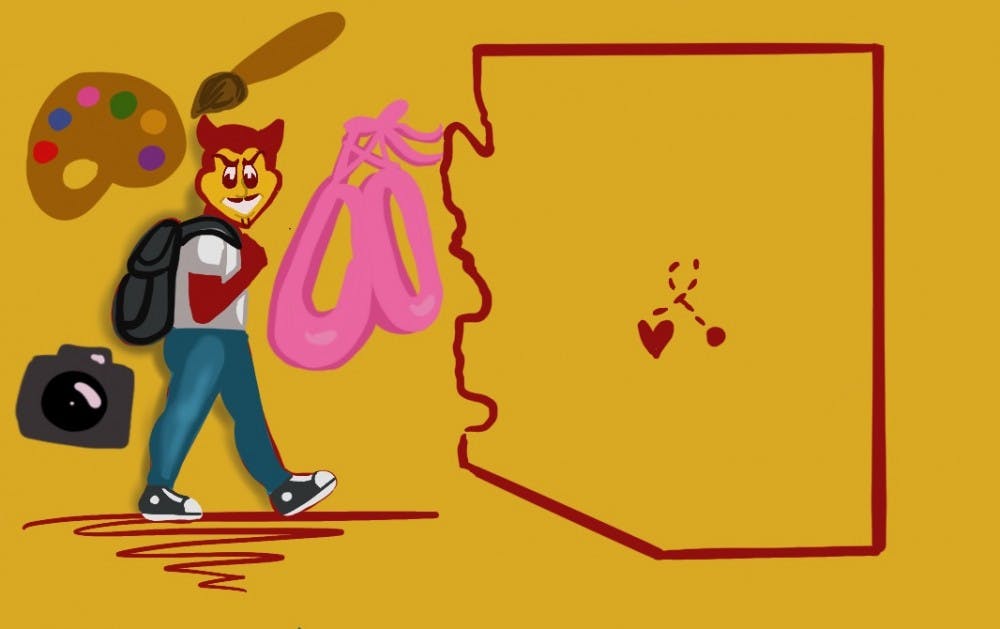Amid a rapidly changing technological climate, art and design can be experienced in new and previously unimaginable ways.
It’s this sharp divergence that has pushed ASU to consider how to best provide its students and faculty with the tools necessary to not only tackle their future, but also create it.
ASU's new Creative Futures Laboratory, a joint venture between the University and the City of Mesa, is set to open in fall 2021.
The lab will host programs related to digital and sensory technology, media arts, gaming and more.
Steven Tepper, the dean of the Herberger Institute for Design and the Arts, said he hopes the Creative Futures Laboratory will be able to help spur growth in the developing innovation district that is underway in downtown Mesa.
Tepper said he also hopes the lab will combine the ideas and energy of students and faculty at ASU with those of the Mesa locals.
While the Creative Futures Laboratory will house several programs for Herberger students, Tepper said he also hopes the lab will become a place for students from all disciplines to converge and collaborate on interdisciplinary storytelling and media production.
“I think the excitement for a student in any field is to kind of be part of the experience of the future,” he said.
Tepper said the lab encourages students and faculty to take an interdisciplinary approach to research, considering the future impact of their work in a variety of fields.
He said they can accomplish this by interacting with students and faculty from outside their own discipline.
Tiffany Lopez, director of the School of Film, Dance and Theater at the Herberger Institute, said the focus of the building is to be completely future-forward by creating a creative hub for both communities.
“I think ASU's charter brings those two things together and allows us to step into that partnership with the city in a really beautiful way … by putting students in touch with leading industry professionals as well as our top faculty," Lopez said.
She said she has a clear vision for what the film program can do at the lab.
The lab can educate filmmakers who are looking to enter the global filmmaking environment, Lopez said, by putting them in a range of team projects that can build up their collaborative leadership skills.
Tepper said that ASU has one of the fastest growing and diverse film programs in the country.
“This will be a signature facility to support a new generation of filmmakers," he said.
Amid controversy surrounding the lack of inclusion in Hollywood and the underrepresentation of people of color in the film industry, there’s more drive than ever to include people of color and women in the industry.
Given ASU’s size, scale and commitment to inclusion, the University aims to usher in a new generation of storytellers with different experiences and different backgrounds, Tepper said.
Brett Cordova, a senior studying landscape architecture program and the president of the ASU chapter of the American Society of Landscape Architects, said he hopes the Creative Futures Laboratory will offer students in Herberger more opportunities to reach a broader audience and inform the general public of what design students do.
“I think it would be beneficial for landscape architects, designers, interior designers (and) architects to go over there and kind of see what the future could be for showing off their designs,” Cordova said.
Sha Xin Wei, director of School of Arts, Media and Engineering at Herberger, said he hopes the Creative Futures Laboratory will offer the school a chance to expand and grow.
The School of Arts, Media and Engineering, Xin Wei said, is focused on making environments richer and more simplified through a series of interdisciplinary innovations.
He said a majority of the programming is also focused on perceiving future issues that may not be relevant now but will be eventually and formulating integrative solutions for them.
“These are all real issues,” Xin Wei said. “So maybe it'd be (a) good idea to try to maybe just imagine it, just play out the scenario in some way.”
The Creative Futures Laboratory, Xin Wei said, is the next step for the school in realizing those goals.
Tepper said the Creative Futures Laboratory will produce opportunities for ASU affiliates and the broader Mesa community to share their stories.
The possibilities, he said, are unlimited if students and faculty go into the project with the commitment to create a community-centered technological space.
Reach the reporter at snalcan1@asu.edu or follow @SarahAlcantar on Twitter.
Like The State Press on Facebook and follow @statepress on Twitter.




